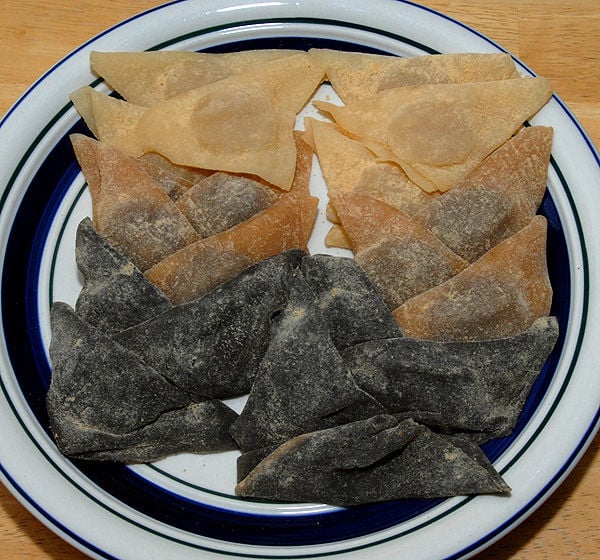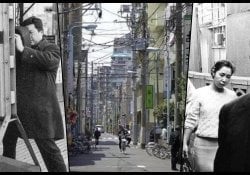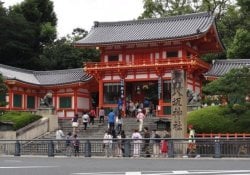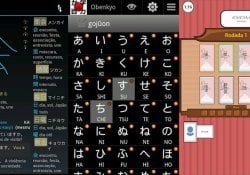Wagashi is a type of traditional Japanese confectionery that is often served with tea. Wagashi are made from a variety of ingredients such as rice flour, bean paste and sugar.
The shapes and designs of wagashi are often based on nature, such as flowers, birds and animals. In this article we will look at 18 of these desserts.
Índice de Conteúdo
The Wagashi story
Wagashi has a long history in Japan, with the first recorded mention of wagashi dating back to the Heian period (794-1185). During the Edo period (1603-1868), wagashi production became more widespread, with various regions of Japan developing their own unique styles of wagashi.
Today, wagashi is enjoyed by people of all ages and is often considered a gift. There are many types of wagashi, from simple shapes to more elaborate designs.
If you are interested in trying wagashi, there are many excellent shops and cafes selling wagashi in Tokyo such as Kagetsu Arashi, Ichigo Ichie and Kaiyodo.
1. Namagashi (生菓子)
Namagashi is the general term for sweets used in the tea ceremony. They must be aesthetically pleasing. Many of them are stuffed with adzuki bean paste.
Namagashi can contain jellies and others, they are made from natural ingredients and often have a nature appearance like flowers and plants.
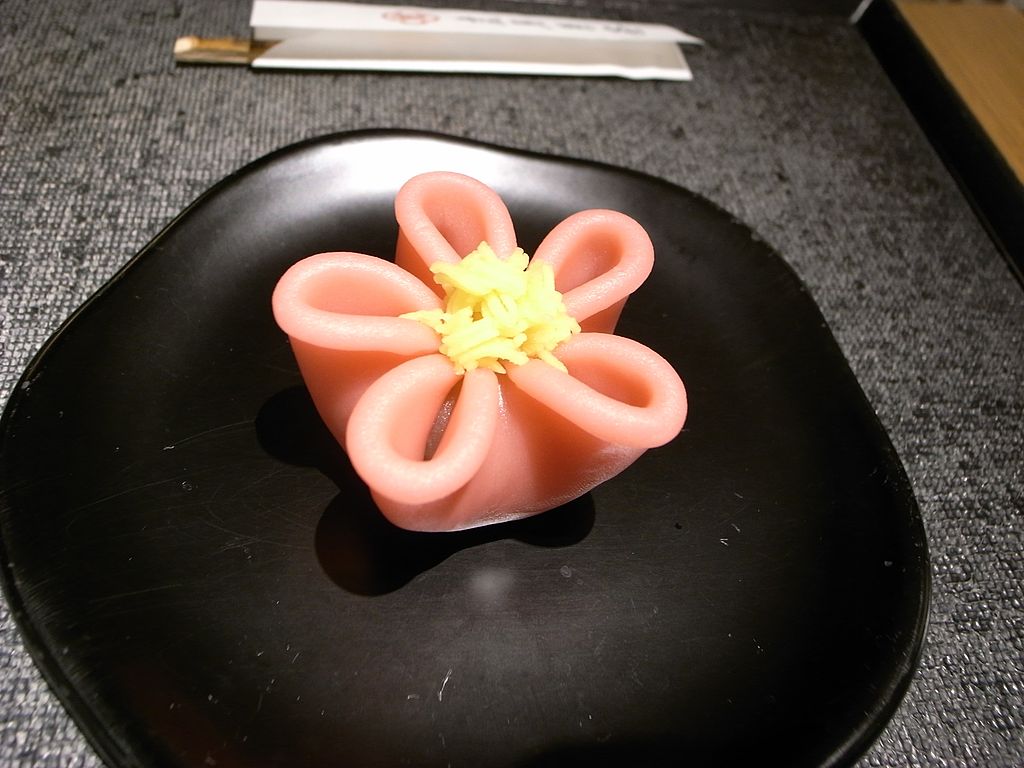
The article is still halfway through, but we recommend also reading:
2. Sakuramochi (桜餅)
Sakura mochi are rice balls filled with bean paste and covered with a sakura leaf. Mochi Sakura are eaten to celebrate Girl's Day (Hinamatsuri) in Japan on March 3rd.
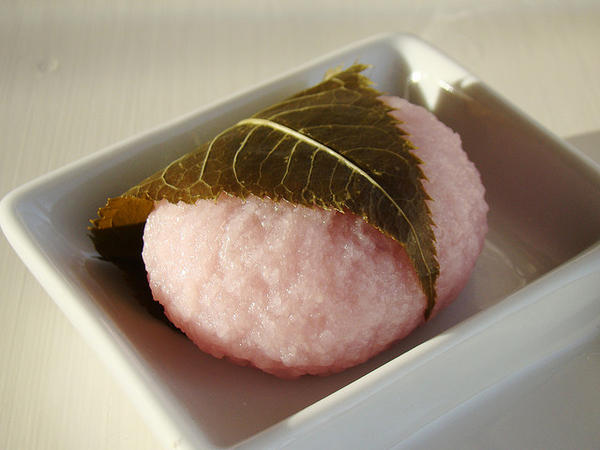
3. Amanatto (甘納豆)
Amanatto are most often azuki beans coated in sugar. Basically a jujube made from beans and other beans. The beans are boiled in water with sugar, and after being dried covered with more sugar.
Not only Azuki, but soybeans and other beans can be used to make Amanatto, thus creating its own flavor. Amanatto is most popular with people over 60 years old, and is usually served with tea in elderly care homes in Japan.
We recommend reading: Amanatto - A sweetened adzuki bean
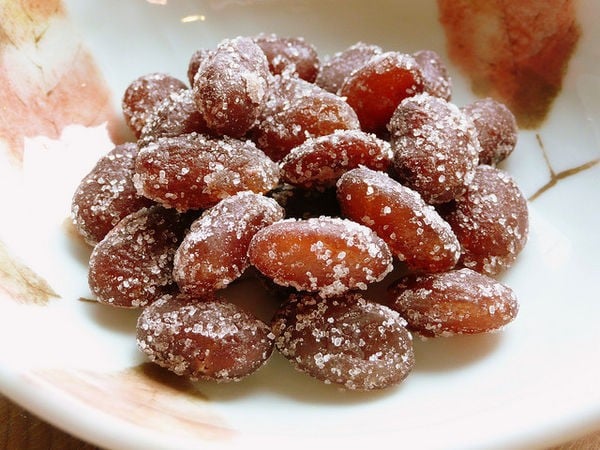
4. Kompeito (甘納豆)
Kompeito Candies are small colored candies made of pure sugar. They are round and have small bumps that occur naturally as part of the cooking process looking like a star or asteroid.
Kompeito was first introduced to Japan by Portuguese traders in the 16th century. Kompeito are gifts of thanks to visitors to the Imperial House of Japan.
We recommend reading: List of 100 Japanese Sweets
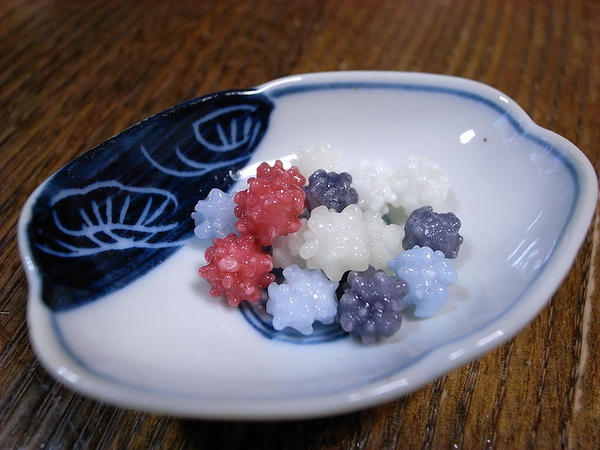
5. Hanabiramochi (葩餅)
Hanabiramochi means "flower petal mochi". It is traditionally served at the first tea ceremony of the new year. This tradition began with the Imperial Family. Hanabiramochi has a different shape and color.
It is filled with mung bean paste. The shape and colors of hanabiramochi have symbolic meaning (related to the new year).
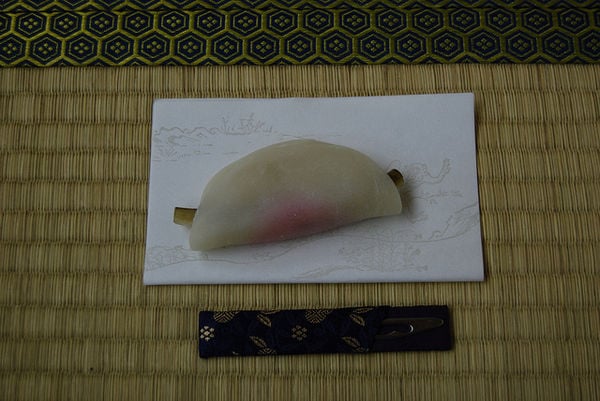
6.Suama (寿甘)
Suama is a dessert made from rice flour and sugar. It uses red dye on the outside and remains white on the inside.
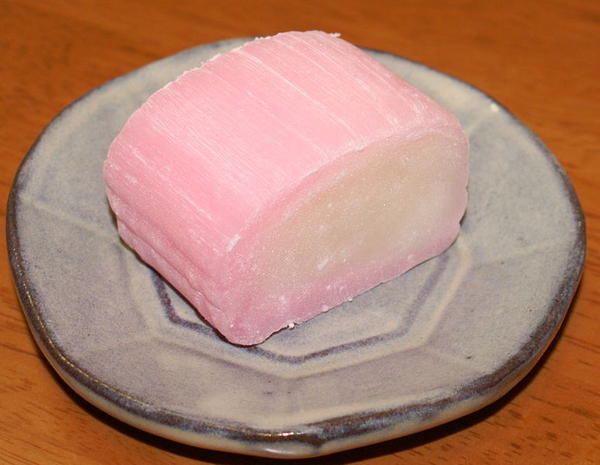
7. Wasanbon (和三盆)
Wasanbon are colored sugar candies. Sugar is made from fine cane grown locally in Shikoku, called taketo (竹糖) or chikusha (竹蔗).
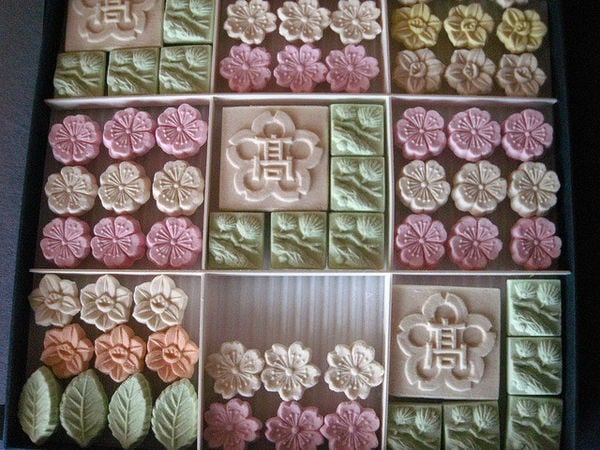
8. Botamochi (ぼたもち)
A seasonal treat made with rice pudding and red bean paste.
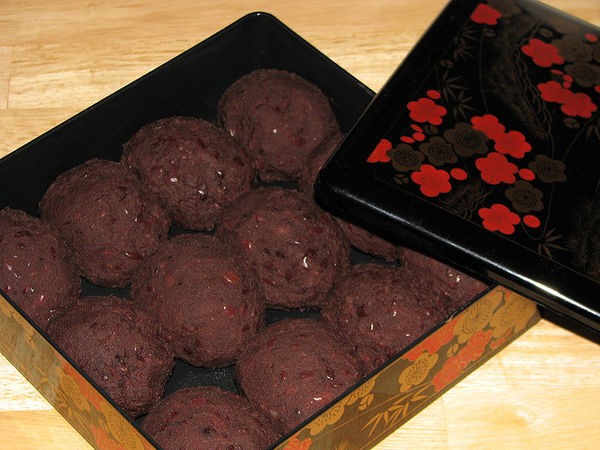
9. Karukan (軽羹)
A Kyushu dessert made from rice flour, sugar and Japanese yam.
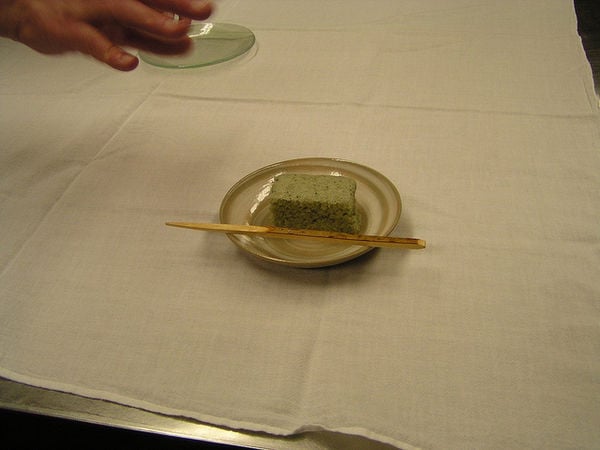
10. Uiro (外郎)
They are chewy and slightly sweet cakes. They come in many flavors such as green tea, sakura, strawberry and chestnut.
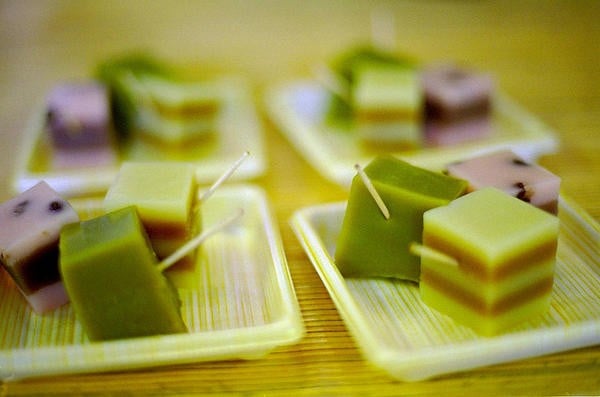
11. Dango (団子)
Dango are Japanese dumplings that are similar to mochi. They are served on skewers with three or four. Flavors vary depending on the time of year. Its name literally means group of children.
The Japanese have been eating dango since the Jomon period, many prepared from forest nuts, which they crushed to bloom and mixed with porridge to survive the winter.
Generally Dango can refer to virtually anything round on a skewer, ball-shaped object; something round or lumps grouped together forming a family.
We also recommend reading: Dango – Curiosities and Japanese Sweet Recipe
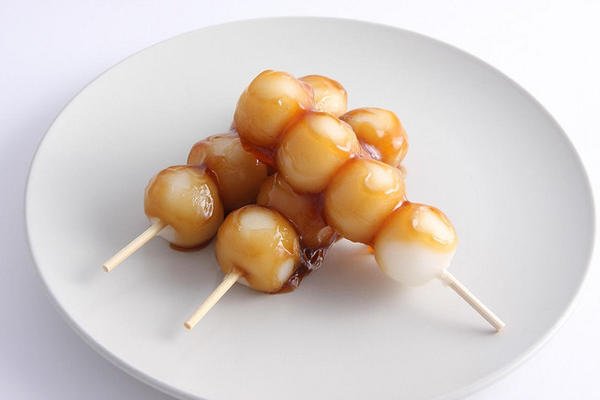
12. Monaka (最中)
Red bean paste candy inside a crisp wafer mochi.
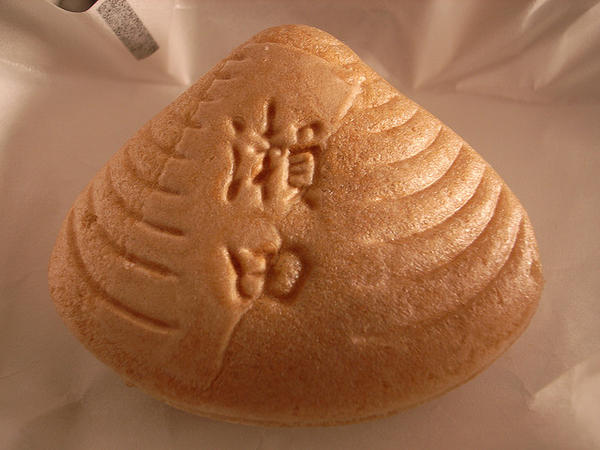
13. Yokan (羊羹)
Yokan is a jelly dessert made from red bean paste, agar, and sugar. They usually have green tea powder, chopped nuts, whole sweetened beans or other ingredients suspended in the jam.
We also recommend reading: Yokan – Japanese Seaweed Jelly Recipe
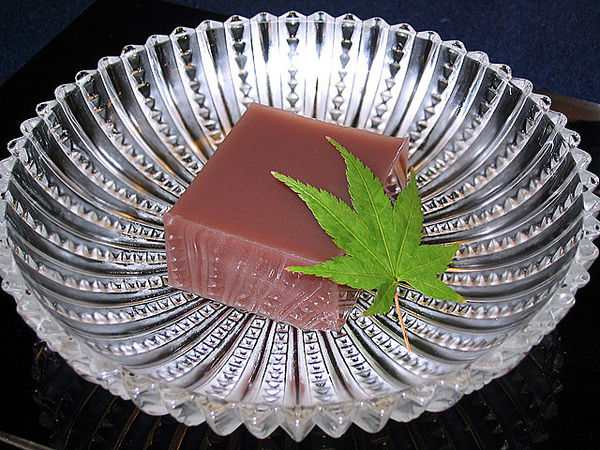
14. Manju (饅頭)
Manju is a traditional Japanese sweet made from glutinous rice flour and usually stuffed with anko (red bean paste). It is said to have its origin in the city of Kyoto during the Heian period (794-1185). Manju can be baked or steamed, and the dough is often hand-shaped into various shapes, including balls, pyramids, and crescent moons.
Manju can be found in most Japanese bakeries and is often given as a gift during special occasions such as weddings and births.
We recommend reading: Yaki Manju - Get to know the sweet filled with red bean and its Recipe
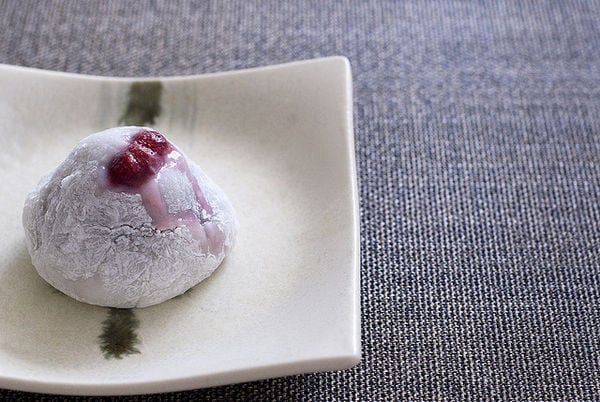
15. Kuzumochi (葛餅)
Kuzumochi is a type of mochi (rice cake) made from kuzu starch. It is traditionally made in Japan during the summer months. The candy is white in color with a smooth, chewy texture. It is often served with a sweet syrup or kinako (soybean powder).
Kuzumochi is made by mixing kuzu root starch with water and then boiling it. The mixture is then cooled and formed into small balls. The balls are then rolled into a powder made from roasted soybeans.
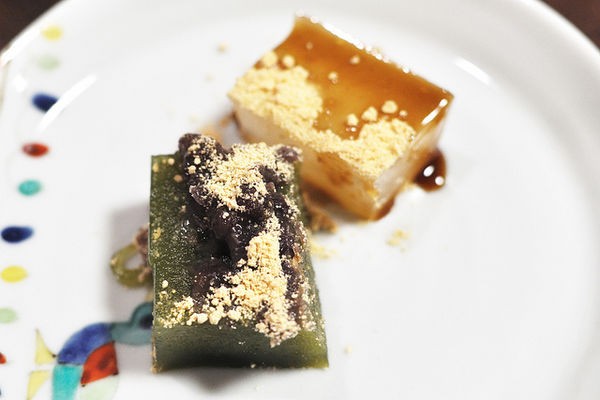
16. Kusa Mochi (草餅)
Kusa Mochi means "mochi herb". It is mochi made with powder from the leaves of the Japanese mugwort plant. It is traditionally consumed in the spring. Kusa Mochi is usually served with sweet soy flour as a topping.
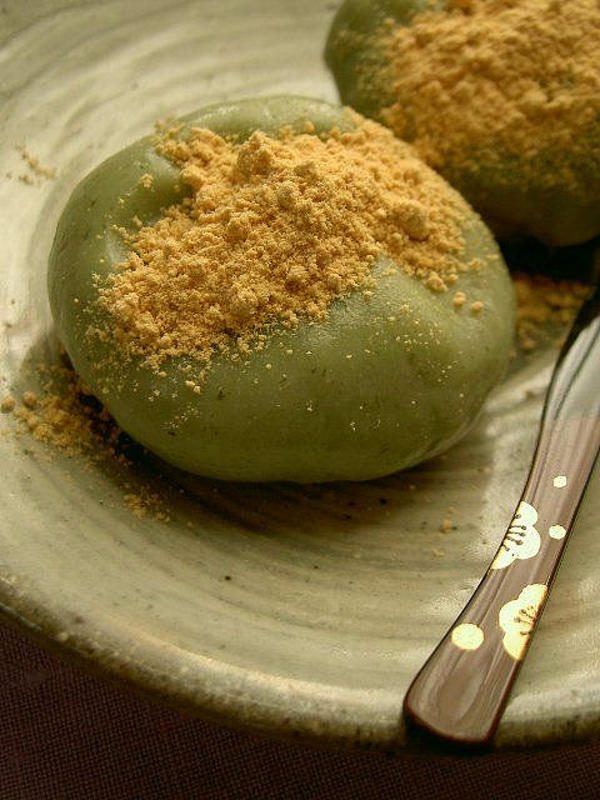
17. Taiyaki (たい焼き)
Taiyaki is a Japanese fish-shaped cake. It is commonly filled with red bean paste, cheese, or cream. Its name literally means grilled snapper fish. It can be found in both sweet and savory flavors.
Taiyaki is basically a regular fish-shaped pancake or waffle. It is placed on a grid with mold on both sides. It is very similar to those Swiss crepes. And it is usually grilled until golden.
The most common Taiyaki is stuffed with sweet beans, but you can find them with chocolate, cream, cheese, green tea or stuffed with meat and chicken. It is a recipe with infinite possibilities, just have the shape in the shape of a fish.
We also recommend reading: Taiyaki – The famous fish-shaped dumpling
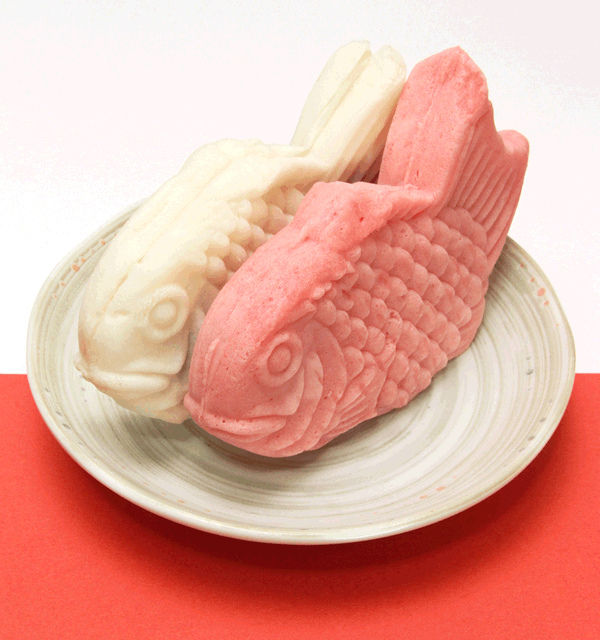
18. Yatsuhashi (八橋)
Kyoto's specialty, with the texture of mochi and contains cinnamon. They are sometimes overcooked and crispy. Other times they are served with a bean filling.
